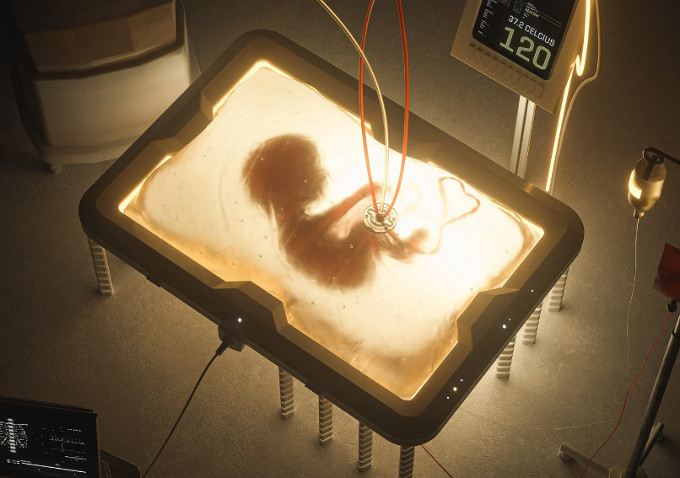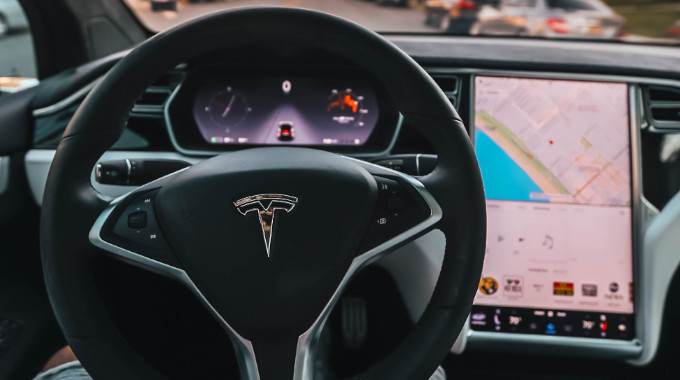
By Jeremy Nadler | New Dawn
In the Western wisdom tradition, there is a recurrent theme of humanity’s self-forgetfulness. We find it, for example, in Plato, in the Corpus Hermeticum, in Boethius’s The Consolation of Philosophy, and in Gnostic texts such as the Hymn of the Pearl. This self-forgetfulness is a forgetting of our spiritual origins, and of the fact that human nature has a transcendent source. The person we ordinarily identify with is not the totality of who we are. This totality includes a spiritual kernel of which we are for the most part unconscious, and yet is nevertheless the foundation of our being, and our relationship to it is the secret of true happiness.
The wisdom traditions of both West and East have perennially sought to inculcate awareness of this spiritual kernel, in order to counteract the tendency of humans of all cultural epochs to forget and to neglect our spiritual origins. But where we today differ from cultures of the past is that not only do we suffer from the forgetfulness that is part of the human condition, but we also pay scant attention to the wisdom traditions that seek to rouse us to remembrance.
Instead, the whole thrust of contemporary culture is towards distraction, fragmentation, and dispersion of consciousness. The Digital Revolution has carried this tendency to an extreme, so much so that if we had deliberately set out to design technologies to induce the distractedness and self-forgetfulness that traditional spirituality has always endeavored to save us from, then we could hardly have done better. This in turn has led to many of us fail to notice just how corrosive these developments can be to the essential human task of remembering the totality of who we are.
But as well as inducing distractedness and self-forgetfulness, our technologies are the vehicles of something else, potentially far more detrimental to our wellbeing.
The Inhuman
Towards the end of his life, the post-modernist thinker Jean-François Lyotard formulated a question that haunts the times we live in. It lurks beneath the surface of our consciousness, for most of us unarticulated and for that reason all the more menacing. Lyotard had the sensitivity to understand its profound importance, and hence the need to raise it to conscious awareness.
The question that he formulated is this: What if what is “proper” to humankind were to be inhabited by the inhuman?
By the ‘inhuman’ we should understand that which is essentially hostile to the human. Lyotard distinguished two kinds of ‘inhuman’ – one is the inhumanity of our social, political, and economic systems. The other is the ‘infinitely secret’ inhumanity that invades the soul and holds it hostage. It is this latter kind of inhumanity that is the more insidious of the two, and it is this that, as our relationship with our digital devices becomes ever more intimate, poses the greatest danger to us. For the inhuman is carried towards us by our technologies.
While we can stand back from and critique the inhumanity of the social, political, and economic systems in which we live, our personal susceptibility to the ingress of the inhuman puts us in far greater jeopardy. This susceptibility has been exploited by the direction that our digital technologies have taken, which has been unwaveringly towards accommodating themselves within the sphere of the human. As they have evolved, they have adapted themselves to the human body as well as to the human soul, becoming physically smaller and lighter and at the same time more powerful and capable.
The first computers were so large we had to stand in front of them or walk around them in order to operate them. With the invention of desktop computers, it became possible to sit in front of them and engage with them, as it were, face to face. Then it became possible to put computers in our pocket, and now it is possible, with smartwatches and smartglasses, to wear them. At each stage, the interface between them and us has become more ‘human friendly’, while at the same time humans have inwardly adjusted to relate to them on a day-to-day, hour-by-hour, and even minute-by-minute basis.
While the computer has been molding itself to the contours of the human body and soul, the inner life of human beings has slowly but surely been molded towards a greater degree of computer compatibility – affecting our language, our thought processes, and our daily habits. In this evolving symbiosis, in which we have become ever more intertwined with the computer, we have also become more dependent on it. Biological integration is not far away. It is the logical next step.
It is of utmost importance, therefore, that we open our eyes to the fact that even though human beings are the inventors, manufacturers and eager consumers of digital technologies, the driving force behind the Digital Revolution is not simply human: the ‘inhuman’ is also seeking to be realized within the human.
How are we to characterize this specter of the inhuman? Human beings have always had the tendency to fall away from their essential nature. For pre-industrial humanity, the danger was conceived in terms of our descending to the animal or bestial level, captives of our untransformed instinctual drives and passions. That, we could say, is to fall beneath the human level: to fall into the sub-human. In our industrial and post-industrial age, the primary danger to our humanity lies less in succumbing to instincts and passions than in succumbing to the cold inhumanity of the machine and the unfeeling, compassionless algorithm. That is to fall into the inhuman.
Both tendencies live within us, and both works to undermine the possibility of realizing our true human potential, but today it is the peril of the inhuman that we must especially guard against. Its aim is to totally supplant the human, and it will surely succeed, should we fail to ground ourselves in the authentically human. We must wake up to the prospect of the colonization of the human by the inhuman and, in full awareness of the gravity of the threat posed by the inhuman, consciously take on the challenge of living humanly.
To Live Humanly
What does it mean to live humanly? If the totality of who we are includes a spiritual kernel of which we are for the most part unconscious, then it follows that to live humanly must be to live in greater consciousness of it. It is incumbent on us to strengthen our sense that this spiritual kernel is our deepest and truest self, and therefore the part of us with which we should seek to identify. This requires that we engage in the arduous work of inner transformation, so that those desires, inclinations, and deep-seated habits of thought, which draw us away from that essential remembrance, are slowly changed, and become inwardly aligned with what the wisdom traditions tell us is the true center of our being.
This moral effort of turning towards, and rooting ourselves in, the spiritual kernel of who we are also involving a shift in the quality of our thinking. This shift is from reliance on result-oriented, discursive thinking that runs along from one thought to another, towards giving more value to the stillness and open receptivity of the act of contemplation. Boethius gives the beautiful image of the seekers of truth having to bend their wandering consciousness into a circle and teach their souls ‘to lodge in the treasure house’ at its center. For there they will find a light, stronger even than the light of the sun, which will illumine their minds from within.
This ‘contemplative turn’ has always been regarded as the foundation of the spiritual life, but it is of especial relevance to us today. Our technologies are based on the automation of logical analysis, calculation and problem solving, and are fundamentally discursive and result-oriented: they are hyperactive and aim always to output results. By contrast, the act of contemplation brings the mind to a standstill: it is not result-oriented, it cannot be automated, and it can only be engaged for its own sake. It enables us to gain insights into the deeper meaning of things, about which machine thinking knows nothing. These insights can well up from the imaginal world as powerful archetypal images, for contemplative thinking borders on imaginative vision. Equally, they can take the form of ideas or intuitions that, like rays of light, illumine a question or life situation from a more comprehensive standpoint.
Contemplation is often described as involving the opening of an inner eye of the soul. It is referred to as ‘the mind’s eye’ or ‘the eye of the heart’, and through it, we become aware of what is invisible to the physical eye. This more interior source of knowledge, which is unconditioned by habits of thought and opinion, could also be described as entailing an opening of the ‘inner ear’ of the soul to the voice of conscience. It can guide us towards a sense of moral certainty about what it is we should or should not do, and to the ideals that can inspire our actions.
Aristotle maintained that an action is only fully our own when we have ‘carried back the origin of the action’ to this contemplative part of ourselves, referred to as the nous, or ‘the center of spiritual intelligence’ within a person. Once it has been carried back to this source, then the action is entirely free because it has been chosen from the center, rather than from the periphery, of ourselves.
In the Western wisdom tradition, the defining characteristic of any action that is truly human is that it is free, precisely because it stems from this originating source. In Aristotle, Thomas Aquinas, and Rudolf Steiner, we find this vital tenet reiterated: that we cannot adequately conceive of what it means to live humanly if we exclude freedom. Freedom belongs to the essence of human nature. That is not to say we necessarily live from the essence of ourselves every moment of the day. Far from it! But the trouble is that our digital technologies, because of their tendency to scatter the soul, don’t help us to do this. Rather they introduce a dark undertow with which we must constantly contend if we are to carry back the origin of our actions to the center of ourselves.
This movement back to the center is the premise of true freedom. It is not given to us on a plate: it has to be won. To become free, we must engage in the work of inner transformation previously referred to, which involves permeating the everyday self and its fantasies, obsessions, and desires with the clearly conceived aims that spring from the inmost source of who we are. In Christian mysticism, this inner work is called theosis, or ‘making divine’. Another word used to describe it was coined by the Italian poet Dante, who called this inner work ‘to transhumanise’ (trasumanare). The verb ‘to transhumanise’ well expresses the fact that our core human striving must be to overcome ourselves so that we go beyond the ‘merely human’ life lived at the periphery of who we are. It is a sign of our times that today ‘Transhumanism’ is a materialistic ideology that seeks to technologically ‘enhance’ the human being. Contemporary Transhumanists fail to grasp that to go beyond the merely human can only be achieved by grounding ourselves in the transcendent, and this requires dedicated soul-work, sustained by the spiritual discipline of coming back to the still point at the center of the circle.
As one of the most influential ideologies steering the Digital Revolution, the contemporary Transhumanist movement shows us the price that the Digital Revolution threatens to exact from us. The price is that we lose our ability to know the meaning and purpose of the spiritual life, we lose even our ability to understand the language that the wisdom traditions use. And ultimately we lose our humanity as overcome by the collective amnesia regarding what it means to realize our deeper human potential, we succumb to the inhuman.
The Interiority of Nature
From nature, too, a price is exacted by the Digital Revolution, which has swamped the natural environment with a complex mix of artificially generated electromagnetic fields. As a result, not just human beings but all living organisms are exposed to levels of electromagnetic radiation far in excess of natural background levels. It would be unwise to assume that this does not have any adverse effect on the wellbeing of living organisms and the ecosystems to which they belong. A growing number of studies show that many organisms are highly sensitive to electromagnetic fields and that increasing their exposure to them can indeed have demonstrable negative effects. It seems appropriate, at the very least, to extend the remit of the question originally posed by Lyotard to nature and ask:
“What if what is ‘proper’ to nature were to be inhabited by that which is hostile to nature? What if the living world were to be infiltrated by a force inimical to life?”
The rollout of 5G is premised on a further significant increase in the overall amount of radiofrequency radiation to which the planet will be subjected. 5G will help to establish a global ‘electronic ecosystem’ that, in addition to servicing the technological desires and aspirations of city-dwellers living in their ‘smart homes, will also enable greater monitoring and control of natural ecosystems and living creatures. It involves the insertion of the electronic ecosystem into these natural ecosystems, in order to create a ‘smart planet’.
The Western wisdom tradition has long acknowledged two aspects of nature: visible and invisible, or manifest and unmanifest. The physical forms that we perceive in the world around us arise from non-perceptible creative and formative forces, which must be taken into account if we are to grasp things in their wholeness. It is these forces that carry the energies of life, just as surely as electromagnetic radiation opposes them. One of the challenges we face today is to overcome our collective desensitization to these subtle life forces.
One step towards doing so is to free ourselves from the dominant utilitarian stance towards nature, which prioritizes data-collection and analysis and ever seeks practical results but is closed to nature’s interiority just as it is closed to the interior of our soul-life. A different kind of consciousness is needed – more receptive, open, and empathetic. Regarding this different kind of consciousness, Goethe advised:
Our full attention must be focused on the task of listening to nature, to overhear the secret of her process.
All of creation speaks of a transcendent spiritual intelligence at its source, if only we are able to hear it. The mystical path to union with God has long been understood to lead from the loving contemplation of creatures to the contemplation of this greater spiritual intelligence from which they issue, and on which they, like we, ultimately depend. For human beings to forget or neglect this relationship of nature to the divine is as serious a failure as it is for us to forget our relationship to the spiritual intelligence that dwells within us. To put it in Christian terms, the same Cosmic Logos lives at the very heart of both nature and the human soul.
Contemporary conditions make it very difficult for such perspectives to be taken with the seriousness they deserve. The incursion of the inhuman has allowed the utilitarian mind to break free of the moral and spiritual constraints that once kept it in bounds. But with the burgeoning electronics industry and the drive to forge a ‘smart planet’, a force hostile to nature insinuates itself into nature’s heart. These developments make nature vulnerable to increasing technologisation, one example of which is the fabrication of completely new synthetic organisms using computer programs. Another example is the design of remotely controlled robot bees to replace the dwindling number of living bees. Such interventions are only the beginning of a vastly ambitious project to redesign the world to satisfy the requirements of a ruthlessly technological consciousness that has lost all connection with its spiritual roots. This consciousness has no sense of the sacredness of life, nor of the spiritual responsibilities of human beings towards nature.
Foremost amongst these responsibilities is the obligation to know things in the truth of their being. Of all creatures on Earth, it is human beings alone who have the possibility of selflessly entering into the inner nature of another creature, without seeking to use or exploit it for our own ends. We alone can place ourselves imaginatively and empathetically into the being of another and, through opening the inner eye of the mind, or heart, we have the possibility of beholding the other in their truth. If we can regularly practice this, then we can help to build up a ‘spiritual ecosystem’ that can counterbalance the deathly ‘electronic ecosystem’ currently being established, for our mode of knowing can contribute something positive and life-affirming to the world. It can be a deed of illumination, which gives to nature the gift of our conscious recognition of its sacred ground.
Human beings and nature belong together. The struggle for a human future is at the same time a struggle for nature’s future. Just as we depend on nature for our survival, so too does nature depend on the quality of our knowing and relating, through which we may bring spiritual light to the world.
About the Author
Jeremy Naydler is the author of two articles on related subject matter that were recently published in New Dawn: ‘Machine Intelligence & Human Intelligence: What is the Difference?’ (New Dawn 170) & ‘5G: The Final Assault’ (New Dawn 173).
The above is slightly abridged and reprinted with permission of the publisher from the Introduction of Jeremy Naydler’s book Struggle for a Human Future: 5G, Augmented Reality and the Internet of Things (Temple Lodge Publishing, 2020). Available from all good bookstores and in Australia from www.rudolfsteinerbookcentre.com.au.










